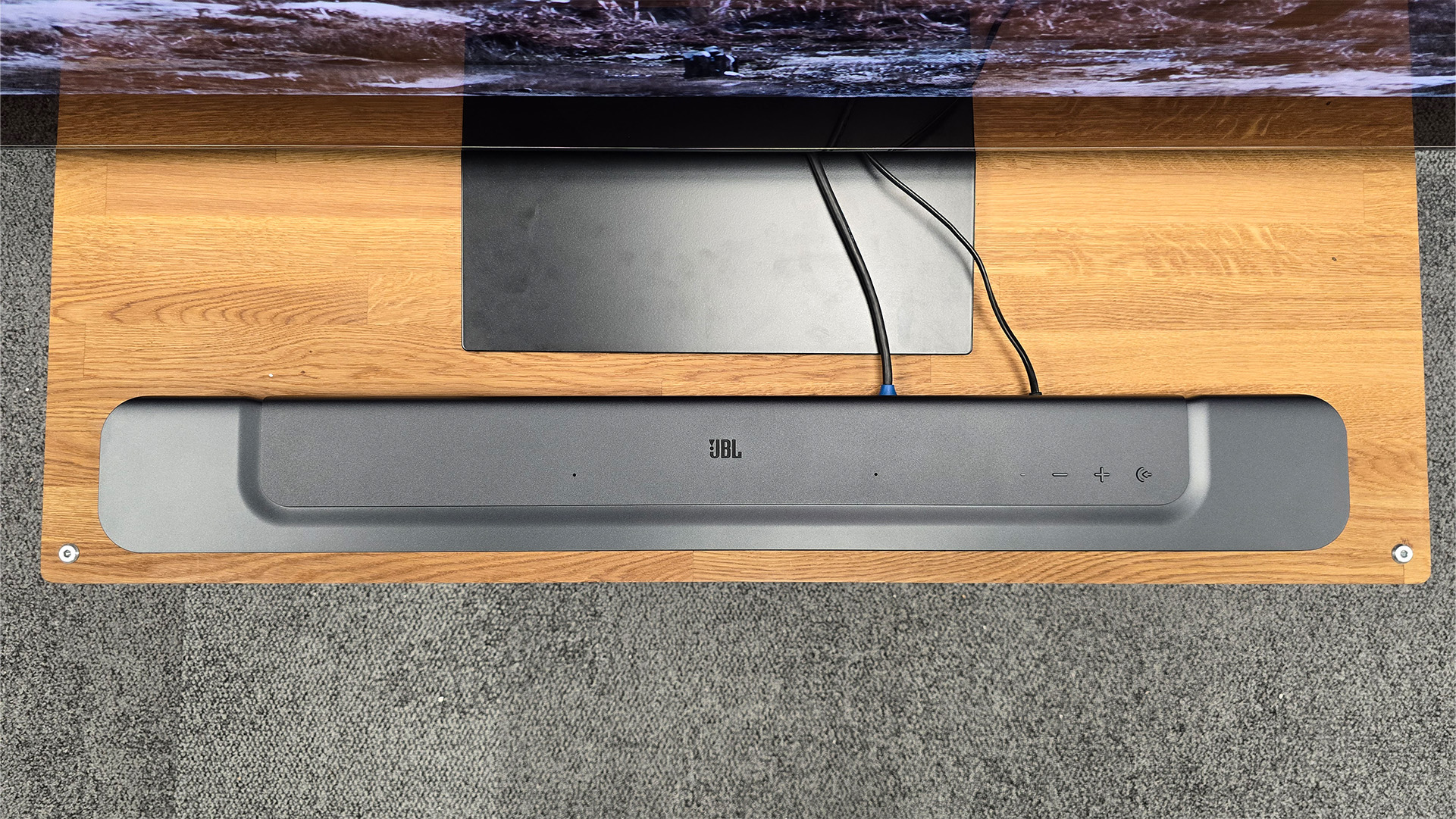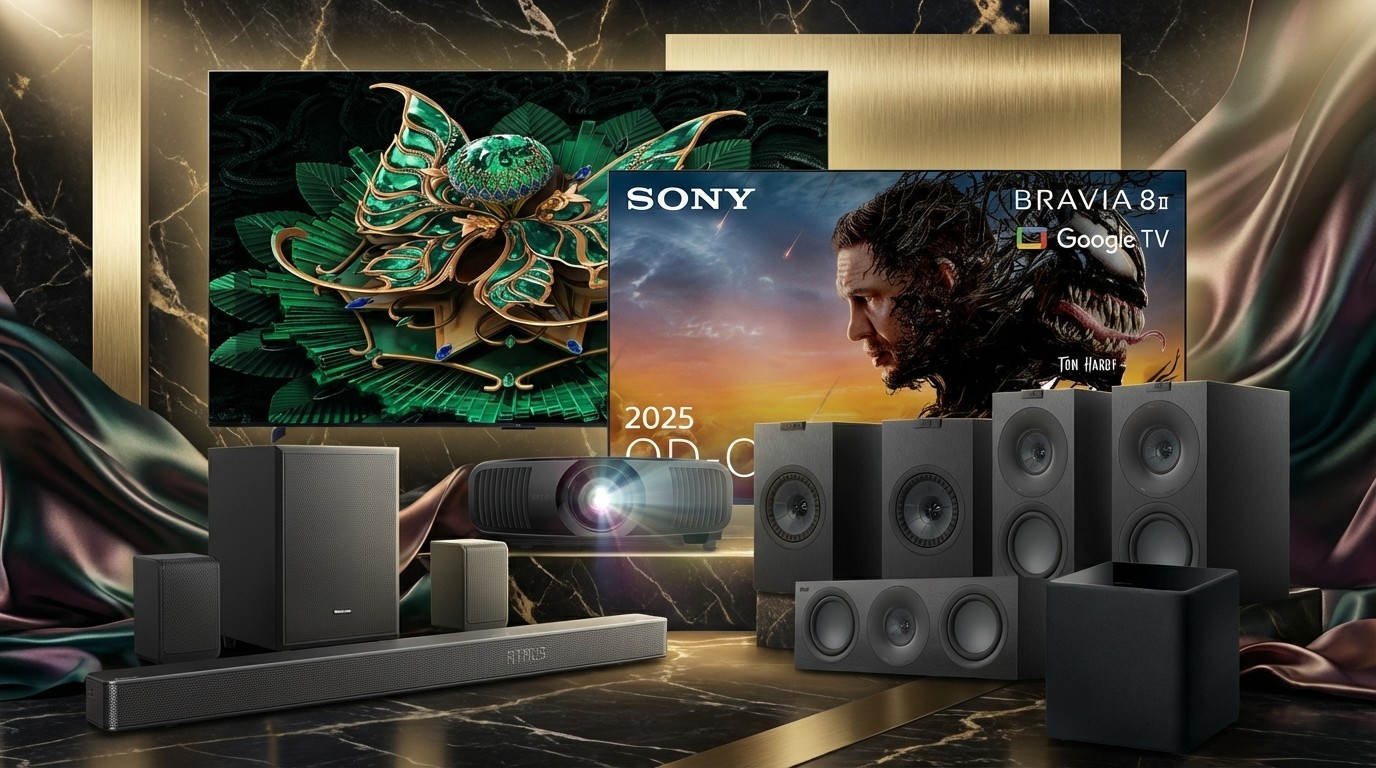What Hi-Fi? Verdict
The JBL Bar 300 combines a stylish build and impressive feature set with a crisp, bassy sound performance – it might not be the best in class, but it's good value
Pros
- +
Clear and crisp dialogue
- +
Impressive low-end
- +
Great feature set for the money
Cons
- -
Slightly bright sound at times
- -
Midrange could be more solid
- -
Not as musical as the best
Why you can trust What Hi-Fi?
We’ve reviewed our fair share of AV amplifiers, speakers and earbuds from JBL recently, but it has been a while since we’ve had a soundbar from the American audio brand in our testing room. The plainly named Bar 300 is set to rectify this, with a simple proposition. The deal here is that for a fairly modest wad of cash, you can get a feature-rich soundbar complete with Dolby Atmos support and a strong set of streaming options.
Sounds tempting, but before we give it any sort of glowing endorsement, we need to remind you that when it comes to soundbars, sound performance is paramount. So does the JBL deliver? We’re not fully convinced, but that doesn’t mean that this soundbar should be totally overlooked.
Price
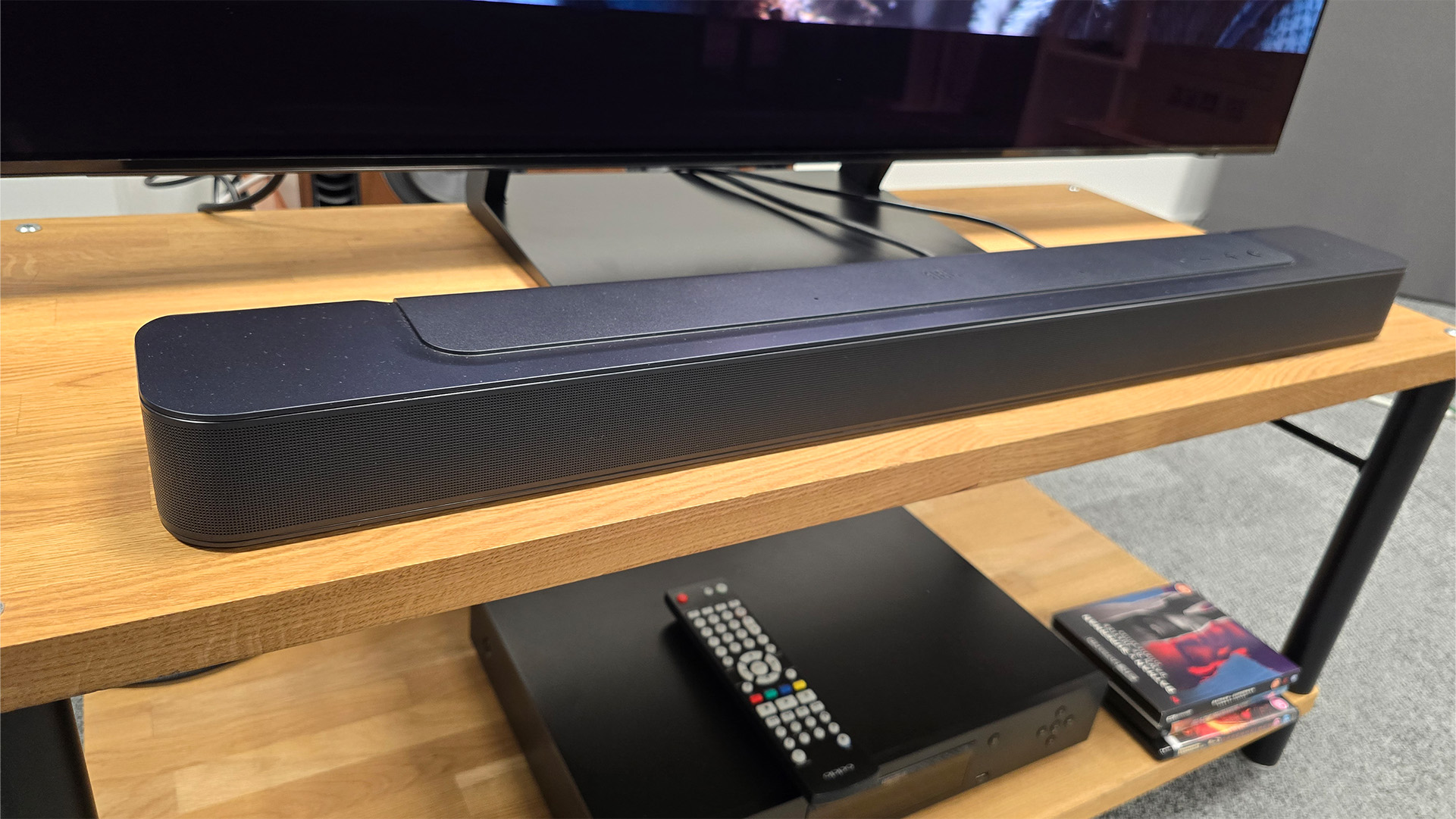
The JBL Bar 300 retails for £330 / $400 / AU$529, which is important for two reasons. The first and foremost is that this places the Bar 300 at the more affordable end of the Dolby Atmos soundbar scale. Very few soundbars that support the spatial audio format hit a price tag this low; apart from one notable bar that has recently passed through our AV testing room.
The Sony HT-S2000 comes in at a very similar RRP of £349 / $500 / AU$595, and it’s just earned itself a five-star review. That puts the JBL in a rather tight spot as, if its performance isn’t on par with the Sony, it's going to be a harder sell.
If your budget is a bit more flexible, it's worth considering the Sonos Beam (Gen 2). It’s a fair bit pricier at £499 / $499 / AU$799, but considering its prestige as a recipient of no fewer than three What Hi-Fi? Awards, we wouldn’t blame you for splashing the extra cash. The Sonos Beam has been around for some time now, so price drops are common, making it an even more enticing option during the sales periods.
Build

This JBL soundbar is more stylish than its price tag may suggest. While it’s not the flashiest or highest quality build, it is solid and features a suave grille that wraps seamlessly around the front edge of the unit. It’s a fairly understated design aside from the top fascia, which features an embossed cutout style that divides the controls from the rest of the body.
Speaking of the top panel, you’ll find just three buttons: volume up, down and input. We appreciate the chunky, oversized buttons as they look unique and make operation easy. What you won’t find on the top fascia is dedicated upward-firing speakers, which tells us a lot about how the soundbar handles Dolby Atmos.
The latest hi-fi, home cinema and tech news, reviews, buying advice and deals, direct to your inbox.
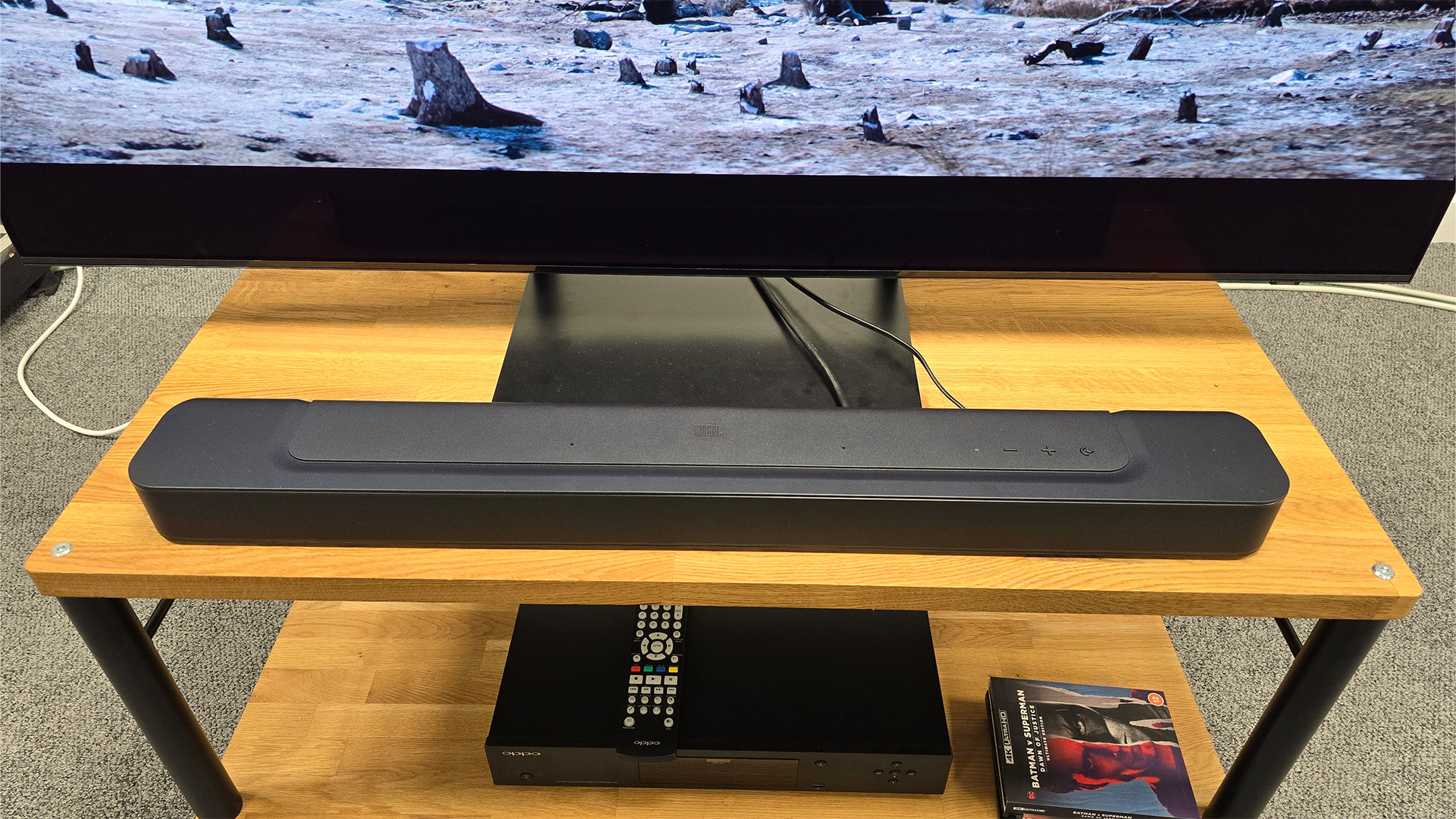
Connectivity HDMI out (eARC), Optical
Sound format support Dolby Atmos
Streaming Bluetooth 5.0
Voice control Works with Alexa, Google Assistant and Siri
Dimensions (hwd) 5.6 x 82 x 10cm
Weight 2.5kg
The design of the soundbar is mimicked by the remote; in fact, the remote looks like a shrunken-down version of the soundbar itself. It's responsive and features every button we could hope for, including a handy toggle for Dolby Atmos and a shortcut button to instantly initiate the automatic calibration system. You’ll also find a bass button, which lets you select between five levels of bass intensity.
Spinning the soundbar around we find the selection of ports. While we’ll explore these more in the features section, we can say now that we appreciate the flat panel that houses these ports. Unlike the Sony, which features awkwardly angled connectors that cause havoc for stiff HDMI cables, the JBL opts for a more straightforward approach – much better in our opinion.
As for dimensions, this soundbar measures 5.6 x 82 x 10 cm (hwd), which isn’t far off the competing Sony soundbar. It sits neatly below the TV we’re using without obstructing the screen, and it’s narrow enough that it only takes up one of our media racks. However, it's a fair bit longer than the Sonos Beam (Gen 2), so if you want a properly petite soundbar then the JBL might not be for you.
Features
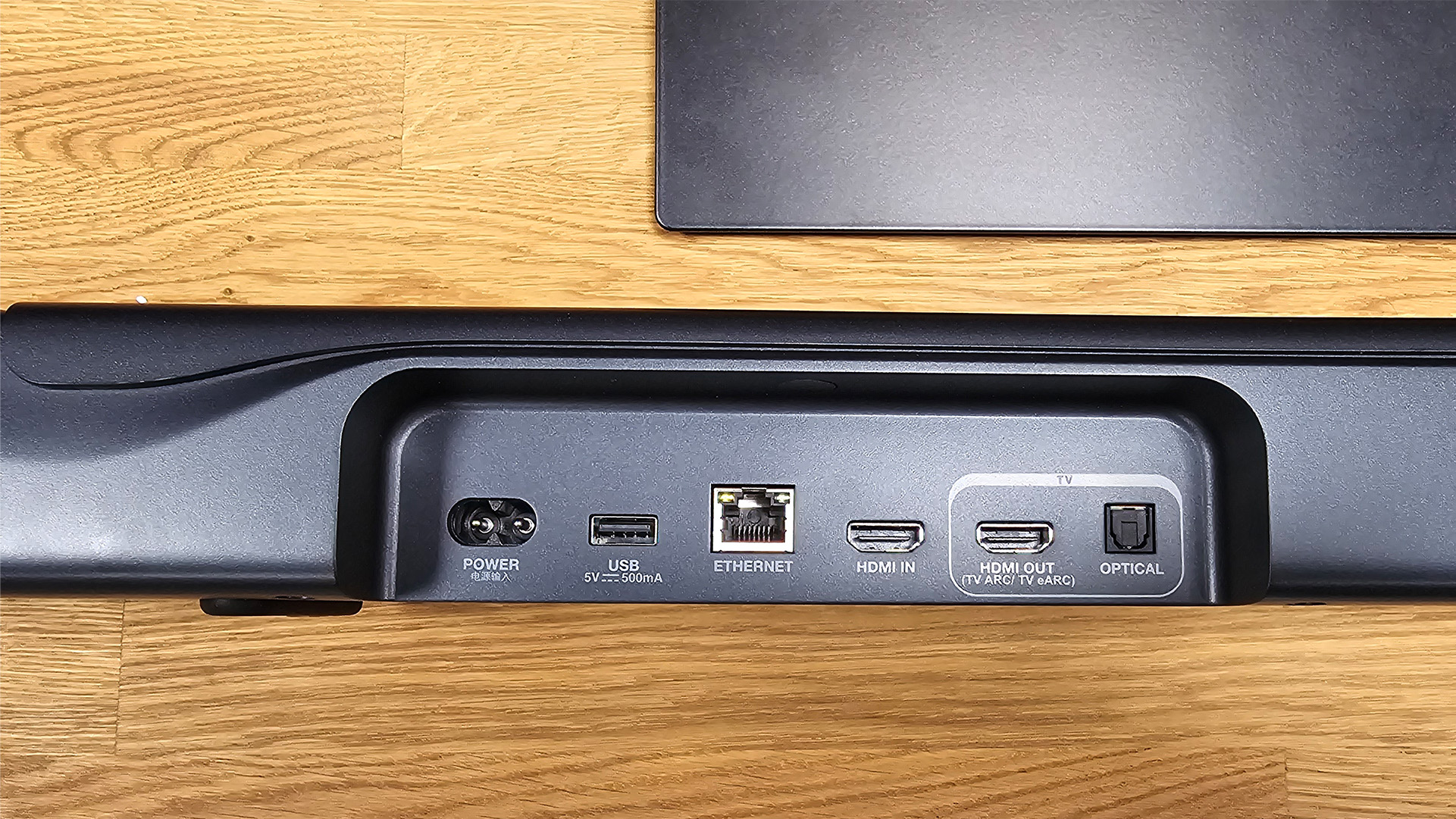
The JBL Bar 300’s feature set is what makes it a more interesting soundbar than it first appears. While its opposing Sony counterpart goes for a plug-and-play, no-frills approach, JBL has squeezed a fair few more features into this affordable TV speaker.
Starting with the set-up process, the JBL is quick, easy and hassle-free in our experience. The JBL One app is optional, but it has a quick sign-up process, and connecting to the soundbar only requires the press of a single button. From here you can connect the soundbar to the internet to unlock the streaming features, which we’ll touch upon shortly. The automatic calibration system – something the Sony doesn’t offer – is also a quick and easy process; with a click of the button on the remote, the soundbar emits a tone that the onboard microphone measures, with the 'bar then adjusting the sound accordingly.
Unlike the Sony, the JBL is a soundbar with streaming smarts built in. Alongside Bluetooth 5.0, the JBL also supports Spotify Connect, AirPlay 2 and Google Chromecast, with the JBL One app featuring media controls for streaming to the bar directly. The JBL also features a solid selection of physical connections including HDMI eARC and optical, an HDMI out passthrough port (that supports 4K, HDR10 and Dolby Vision – an excellent feature at this price), a LAN connector for wired internet access and a USB A port. Note that the USB socket only supports media playback on the US version of this soundbar; elsewhere it acts as a service port only.
The Bar 300 features four 46x90mm racetrack drivers (named after their oblong shape) and two 20mm tweeters, with a combined power output of 260W. As previously mentioned, this bar doesn’t have any upward-firing drivers, so Dolby Atmos support is achieved through virtualised height sound processing rather than physically firing sound upwards and reflecting off the ceiling. It also supports JBL’s Multibeam technology, which aims to expand the soundfield using directional sound processing.
Finally, the JBL supports a plethora of voice assistants. You can connect an Alexa, Google Assistant or Siri-enabled smart speaker to the Bar 300 to access hands-free streaming. Considering there are microphones on the unit itself, we find it odd that JBL didn’t include entirely hands-free voice control.
Sound
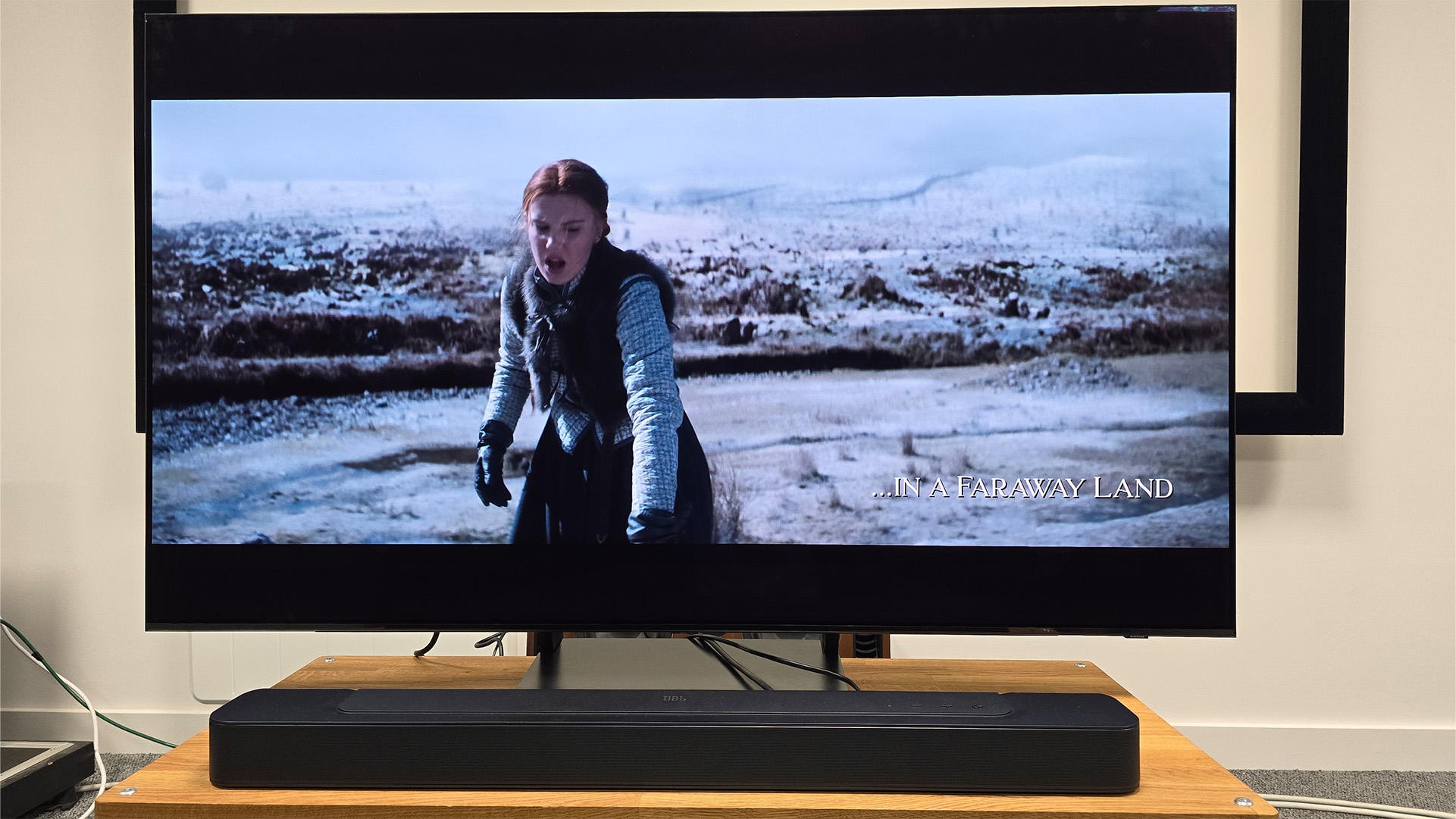
Starting with Oppenheimer in Dolby Atmos, the clarity of dialogue is an immediate win for the JBL Bar 300, with the conversation between the titular physicist and Niels Bohr sounding crisp and well-enunciated. While it doesn’t deliver oodles of emotion or subtlety in the voices, we can hear some variation in the delivery of Murphy and Branagh’s respective lines.
As the scene progresses into the montage of Oppenheimer’s scholarly pilgrimage to Germany, we allow the JBL to flex its muscles in the low end. The bassy, rippling effects of the particles whirling in J Robert’s visions are delivered with ample low-end kick, making for an impressive performance for a bar of this stature and price. We do push our luck somewhat by attempting to crank the bass up from the default position, but truthfully we wouldn’t recommend that, as it begins to sound mushy and overbearing.
Unfortunately, the JBL doesn’t completely excel with the Academy Award-winning drama, and we find that the mids sound a little hollow and lacking some solidity.
The JBL also produces a bit of sibilance with some of the background sound effects, which makes them stick out to a degree that they shouldn't. As Oppenheimer races through the corridors of Cambridge University, the background chatter of students sounds a little sharp and hissy, instead of the atmospheric murmur it's intended to be. It's certainly worth noting that this isn't a common occurrence, and is mostly just an issue with busier scenes with lots of competing effects.
Switching to Batman V Superman: Dawn Of Justice (in Dolby Atmos), we get back on track with the JBL’s strengths once again. In the pulse-pounding warehouse fight, we find the JBL takes on a more energetic and exciting sound, as the Caped Crusader darts around dispatching Lex Luthor’s henchmen. The score and frenetic action move with pace, ensuring the action stays engaging and exciting.
We also find the Bar 300 handles large-scale dynamics quite well, likely in part due to its impressive bass performance. As the Dark Knight bursts through a wall, we’re treated to a satisfying and impactful crash, which does the moment justice (pun intended).
We can’t help but notice the slightly harsh treble that reared its head during Oppenheimer once again though. The effect of knives slicing at Batman’s armour sounds overly bright and lacks subtlety, making for a piercing one-note effect. The shattering of glass as Batman leaps through a window towards the beginning of this scene commences with a fairly bright leading note, without much detail or texture to follow through with.
Rounding things out with Blade Runner 2049 (once again in Dolby Atmos) we’re pleased to find that the Bar 300 does a solid job of recreating the bustling streets of dystopian LA. In the scene in which Officer K is approached by Mariette, we’re impressed by the JBL’s ability to capture the dingy atmosphere of the rain-drenched streets while retaining the grandiose scale of the futuristic megacity.
Rounding things off with a music test, the JBL is once again a mixed bag as many of the strengths and weaknesses we’ve seen thus far are present once again. alt-J’s Dissolve Me on Tidal (via Chromecast) proves to be clear and crisp on this bar, with a good sense of rhythmic timing and energy. The bassy motif in this track is also well-serviced by the Bar 300’s capable low-end response.
However, the lack of warmth and lean-sounding mids impact our enjoyment of the track and we notice a somewhat congested feel to the sound which feels restrictive.
Verdict
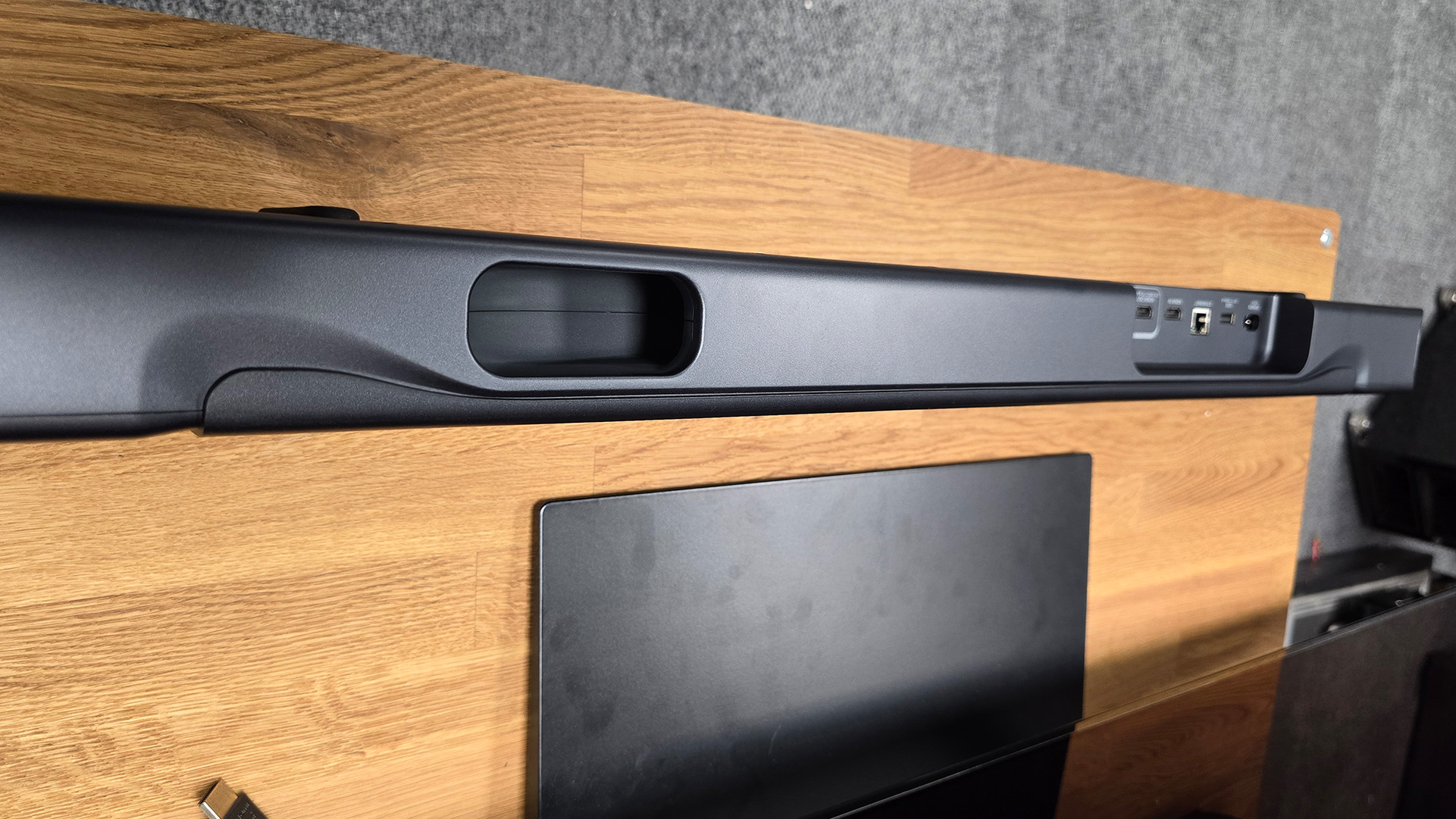
JBL has delivered a budget soundbar that’s both stylish and feature-rich. The Bar 300 packs Dolby Atmos, an automatic calibration system and streaming smarts into a price that undercuts rivals that cost considerably more. The bottom line is that it will very likely be an improvement on your TV’s built-in speakers. However, its equally-priced Sony counterpart sounds notably better.
Therein lies the problem with the JBL; it doesn’t hold a candle to the HT-S2000 when it comes to sonic proficiency. While it may be clear and energetic, the JBL is missing a fair amount of heart, which prevents it from toppling its budget competitor.
SCORES
- Sound 4
- Features 5
- Build 4
MORE:
Read our review of the Sony HT-S2000
Also consider the Sonos Beam (Gen 2)
Read our Sonos Ray review
Best soundbars: options for every budget, recommended by our experts
What Hi-Fi?, founded in 1976, is the world's leading independent guide to buying and owning hi-fi and home entertainment products. Our comprehensive tests help you buy the very best for your money, with our advice sections giving you step-by-step information on how to get even more from your music and movies. Everything is tested by our dedicated team of in-house reviewers in our custom-built test rooms in London, Reading and Bath. Our coveted five-star rating and Awards are recognised all over the world as the ultimate seal of approval, so you can buy with absolute confidence.
